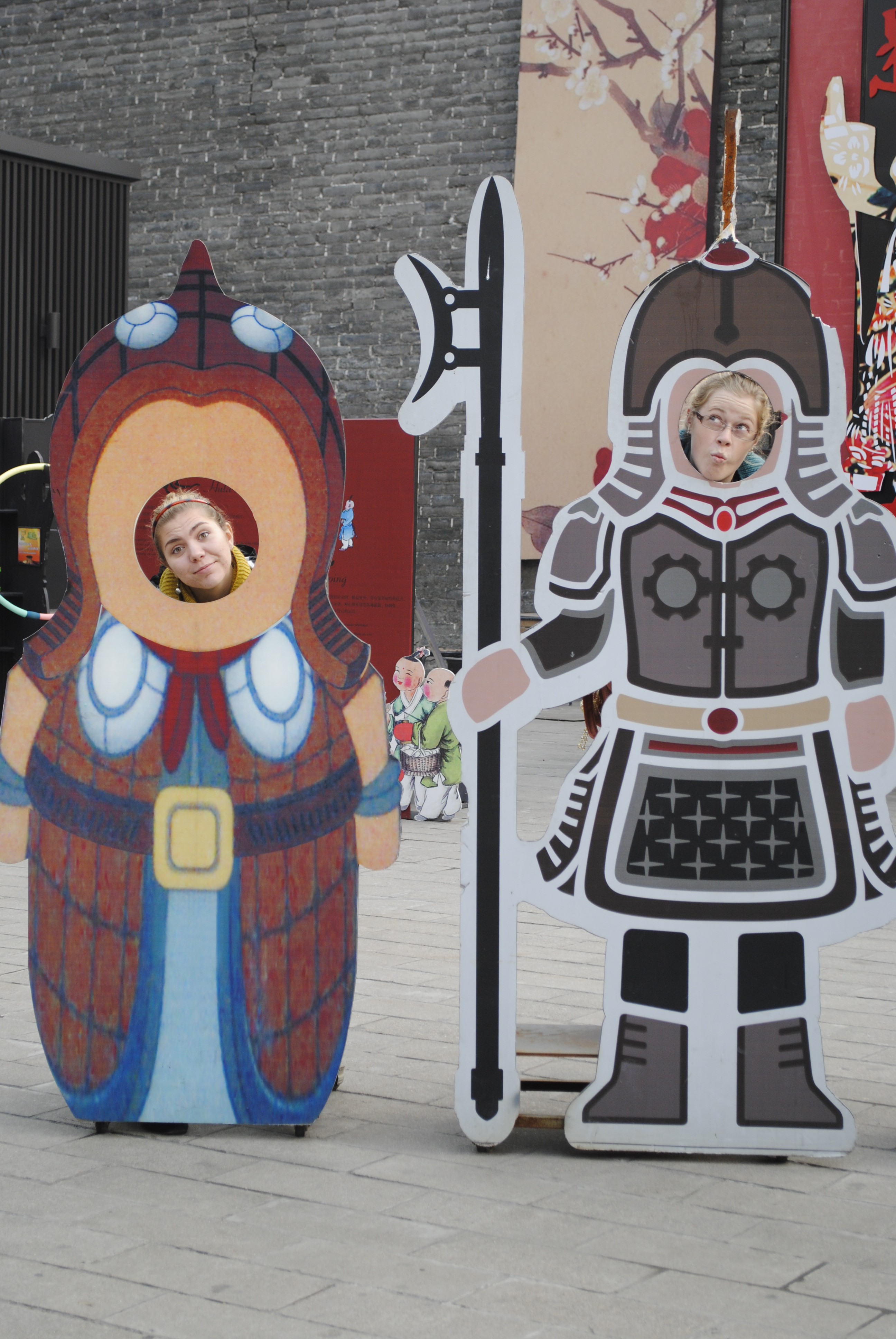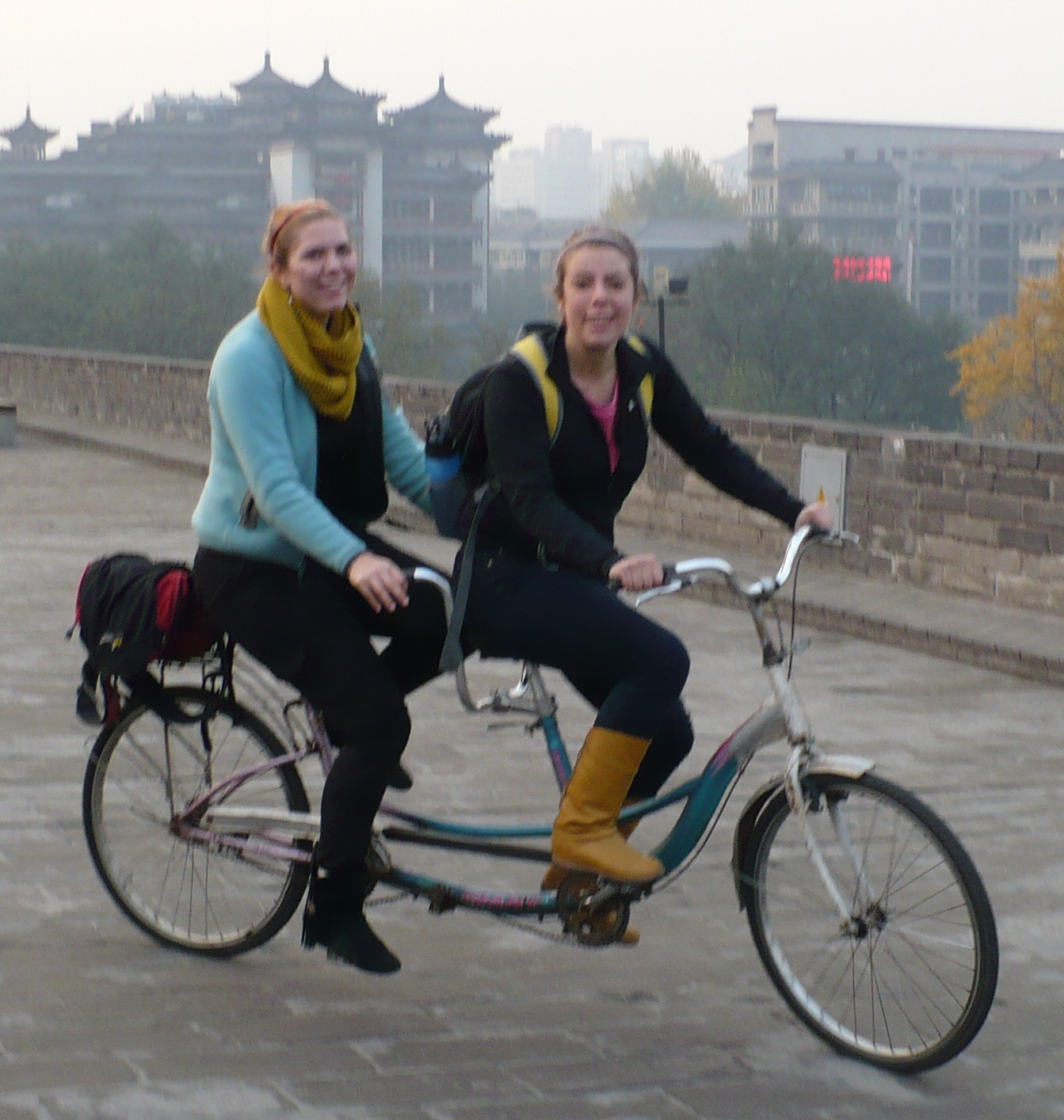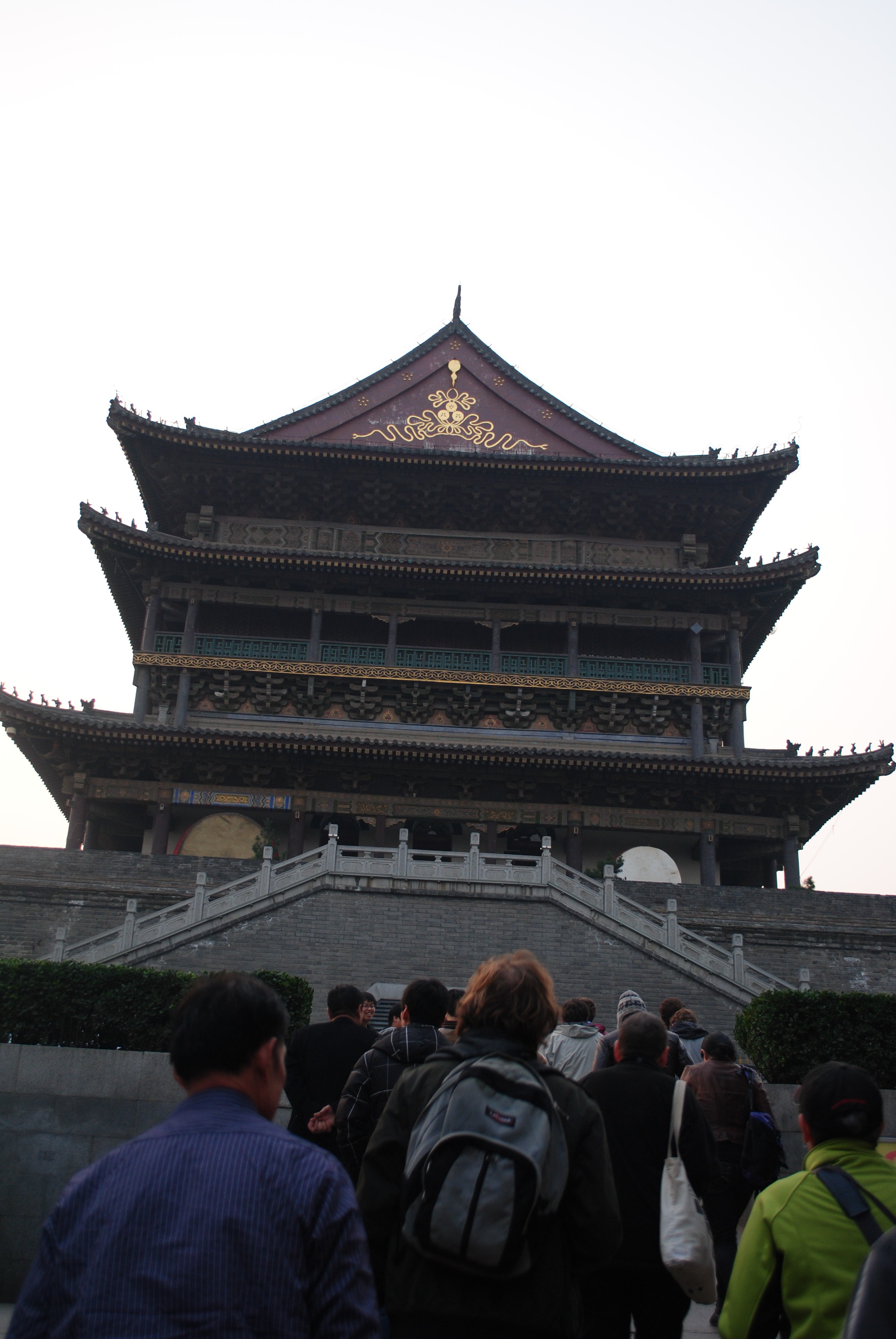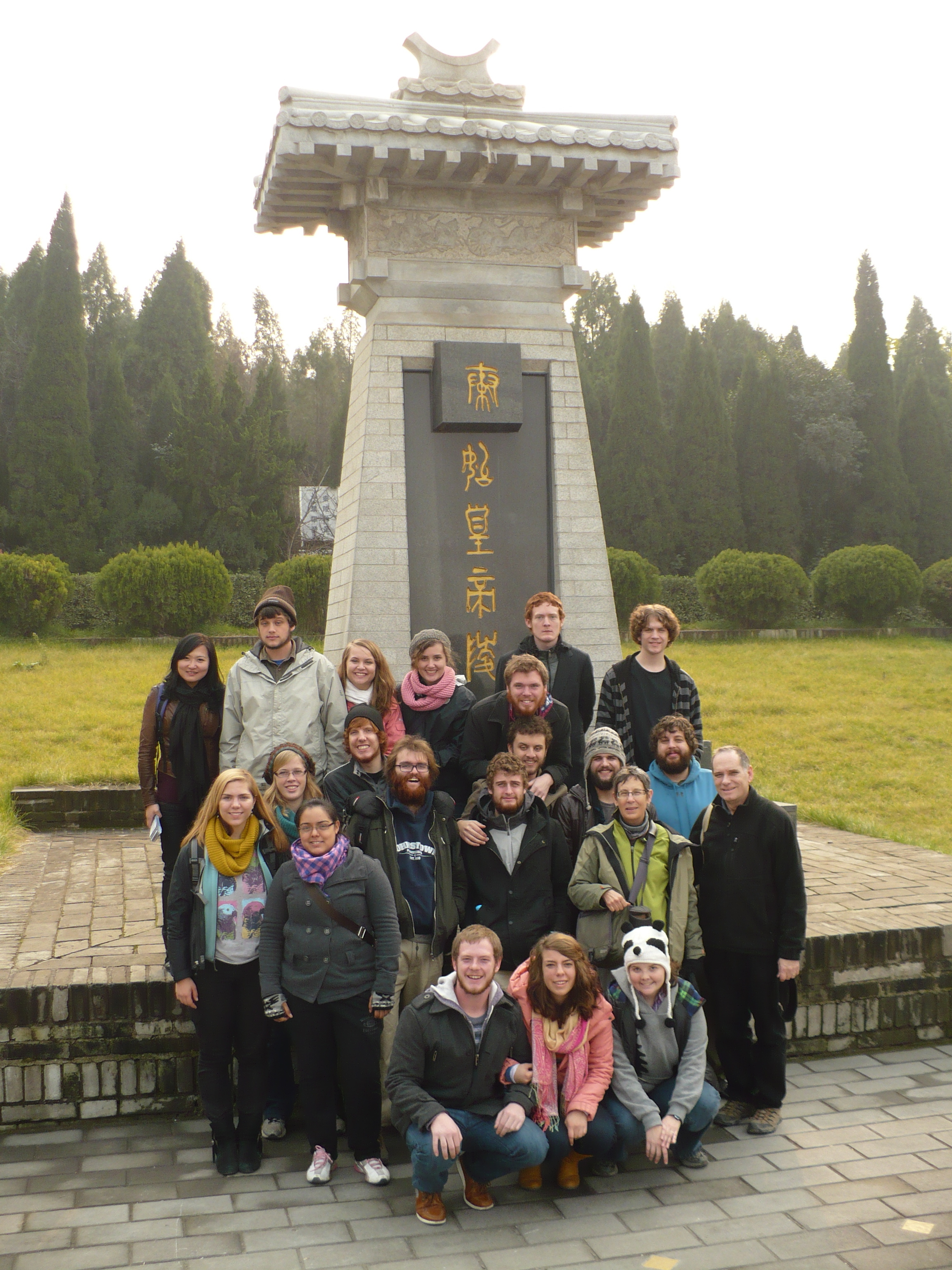Leaving China: Visit to Xi'an
On Nov. 23, we met at the Nanchong train station, bid farewell to our generous host families, and boarded a fast train to Chengdu. There we met a friend who kindly offered to babysit our luggage while we headed out to find our evening meal. Our May Term language teacher, Betty Z. joined us to board an overnight train, heading 15 hours northeast to our next destination: Xi’an. Betty accompanied us through the rest of our time in China. As we woke the next morning, we enjoyed the remainder of the mountainous landscape we had traversed in the dark. We had found our unheated classrooms in Nanchong prefecture increasingly chilly throughout November. Now we could see signs of even colder weather: frost, heavier jackets, the breath of workers along the tracks.
Arriving in Xi’an shortly after noon on the 24th, we lugged our suitcases to a nearby hotel, and then sat down for a noon meal—just after midnight on what back in Goshen would be Thanksgiving Day. No turkey for us, but reminiscent of the legendary first Pilgrim celebration, we are thankful that when we arrived in China, others were here to greet us. Those whom we met, showed us how to survive and thrive in this different landscape. We hope we have recognized and expressed our gratitude to them in ways more appropriate than those early European settlers often chose as they interacted with the people whom they encountered upon arrival on new shores.
Xi’an, with a history that extends back more than 3000 years, intermittently served as China’s capital for long periods. Today, it serves as capital of Shaanxi Province. Xi’an’s center is surrounded by a 40-ft. high wall, dating back to 1370. A century ago, one would have found such walls surrounding many Chinese cities, but Xi’an is one of a relatively few larger Chinese cities that still has an intact wall today. Many of us rode along the top of the wall’s 11.9 km circuit—a few more leisurely riders turned back before the halfway point and saw part of the wall twice. Numerous Chinese cities retain their drum and bell towers. Xi’an also has both, but the bell tower was closed for renovation. We spent the remainder of the afternoon at the drum tower—once a communication hub for public signals related to time or to mark auspicious days for accomplishing various tasks. As dusk fell, we entered the Great Mosque of Xi’an. Founded in 742, it is China’s oldest mosque. Following the visit there, we found supper in the surrounding market area. Many of us sampled a local Muslim specialty, mutton and bread stew.
The next morning we caught a bus out to the burial site of Qin Shi Huang, the first emperor of unified China. Before his death (210 B.C.E.), he arranged for the production of a huge army of life-sized terracotta figures with (smaller) horses to accompany him in the afterlife. Rediscovered in 1974, this buried army provides clear evidence of the technical and artistic skill achieved by Qin-era artisans. Archaeological excavations continue, but visitors, including us, are able to visit three major “pits,” estimated to contain a total of about 8,000 human figures. Smaller scale excavations are also progressing in the nearby region. We visited one of those and walked around the large, as yet unexcavated, hill that is presumed to be the place the emperor himself may be buried.









































































